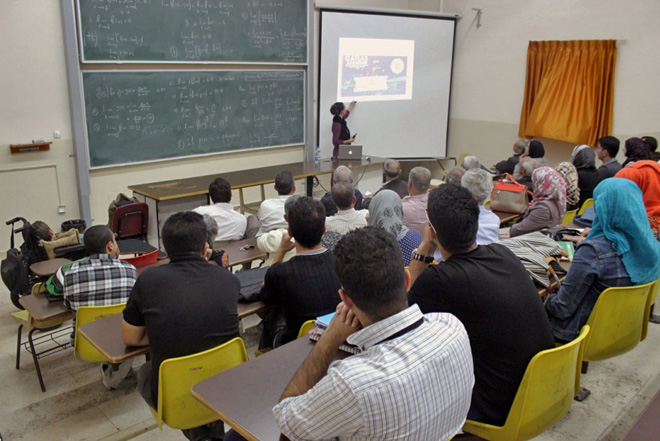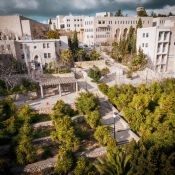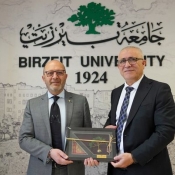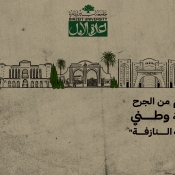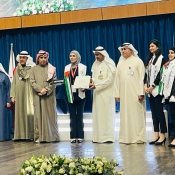ATLAS Researcher Traces History of Higgs Boson Discovery
Visiting scholar Kate Shaw wowed listeners with her description of the discovery of the Higgs Boson particle in a lecture sponsored by the Birzeit University Physics Department on October 29, 2013.
Shaw explained the connection between the results from the ATLAS experiment on the Higgs Boson and the Noble prize in physics this year, which was awarded to the scientists Peter Higgs and François Englert.
Dr. Shaw acts as an ambassador for the International Center for Theoretical Physics in Trieste, Italy and teaches a Master’s course in particle physics at Birzeit University. She is also a researcher for the ATLAS experiment at the European Organization for Nuclear Research (CERN).
Last July 4, ATLAS announced the discovery of a new fundamental particle of nature: “the Higgs Boson.” This particle was predicted by a theory that described how particles acquire mass and was developed in the 1960s through significant contributions from the winners of the Noble prize in physics in 2013.
From theory in the 1960s to experimental discoveries made in 2012, it took several decades of hard work and collaboration between thousands of scientists and engineers from different parts of the world to build the Large Hadron Collider (LHC) at CERN which started to operate in 2008. The LHC is built about 100 meters underground on the Franco-Swiss borders under the city of Geneva and it is the only collider in the whole world that operates at such high energy.
In the LHC, a beam of high-energy protons travelling at almost the speed of light collides with another similar beam travelling in the opposite direction. At collision points, there are huge detectors, built to search for new particles that are produced from such high-energy collisions. One of these detectors is the ATLAS detector, which weighs about 7,000 tons and is the largest volume particle detector ever constructed, Shaw explained.
The huge amount of data collected by the ATLAS detector at the LHC was analyzed by several research teams and lead to the discovery of the new particle in 2012. While explaining the techniques and analysis methods leading to this discovery, Dr. Shaw showed some figures and histograms published by the ATLAS group. At the end of her lecture, Dr. Shaw talked about what future work is needed to be done to finally unlock the secrets of the Higgs Boson and its properties.
The lecture attracted many university academics and students from different disciplines. The Vice President for Academic Affairs Professor Henry Giacaman, Dean of the Faculty of Graduate Studies Talal Shahwan, Dean of the Faculty of Science Wa’el Karain and the head of the Physics Department Wafaa Khater were among the audience.

